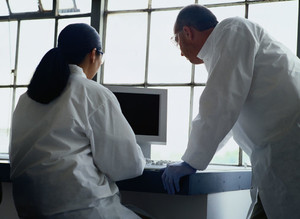Mr Akito Natsume et al. of Kyowa Hakko Kirin, Machida-shi, Tokyo, Japan, have shown to improve effector functions of monoclonal antibodies (MAbs) for cancer treatment by enhancing ADCC and CDC, as published in their review article in Drug Design, Development and Therapy 2009:3 of December 2008.
Improving effector functions of MAbs for cancer treatment: Enhancing antibody-dependent cell-mediated cytotoxicity (ADCC) and complement-dependent cytotoxicity (CDC)
Biosimilars/Research
|
Posted 04/03/2010
 0
Post your comment
0
Post your comment

The authors point out that several platforms for MAbs have already been approved, and several MAbs have demonstrated clinical effectiveness in a variety of malignancies. However, several issues have also been emerging in antibody therapy, such as high cost and insufficient drug action.
Recently, to improve MAb activity in humans, effector functions have been subjects of focus, especially (ADCC) and (CDC). Extensive efforts have been made to enhance these effector functions of MAbs, and successful approaches have been reported by us and others, wherein the binding activity of MAbs to FcγRIIIa or C1q is increased by introducing amino acid mutations into heavy chain constant regions or through glycomodification of Fc-linked oligosaccharides. In addition, one of the next approaches to optimising therapeutic antibodies would be to combine multiple enhancing modifications into a single antibody platform to overcome the diverse mechanisms of clinical resistance of tumour cells.
For this aim, the authors developed a successful combination composed of ADCC-enhancing modification by the fucose depletion from Fc-linked oligosaccharides and CDC-enhancing modification by IgG1 and IgG3 isotype shuffling in heavy chains, which could be of great value for the development of third-generation antibody therapeutics. They showed that fucose removal from Complegent antibodies (IgG1/IgG3 chimeric isotype antibodies), in what they call the AccretaMAb platform, resulted in the full retention of potent ADCC and CDC, to levels that are comparable to those seen for the Potelligent technology or Complegent technology alone, respectively.
According to Mr Natsume et al., the successful combination of ADCC- and CDC-enhancing modifications in their AccretaMAb platform is constituted by two essential structural factors:
- IgG1/IgG3 mixed constant regions that enhance C1q binding and CDC activity, and
- nonfucosylated oligosaccharides linked to the Fc of the mixed variant constant regions that maximize its ADCC. They stress that the AccretaMAb platform is fully composed of natural structural components, which would render the antibodies potentially less immunogenic compared to artificially-engineered antibodies.
The authors believe that the promising combination of the two clinically proven effector functions, namely ADCC and CDC, will be confirmed in future clinical trials of AccretaMAb antibodies. Furthermore, they think that the expanding technologies that enhance multiple anti-tumour mechanisms of therapeutic antibodies would be of great value for the development of third-generation antibody therapeutics as long as they are used in the right patients, with the right dosage and on the right schedule, and perhaps monitored with appropriate biomarkers.
Reference:
Akito Natsume et al. Improving effector functions of antibodies for cancer treatment: Enhancing ADCC and CDC. Drug Design, Development and Therapy 2009:3 7-16. December 2008.
Source: Drug Design, Development and Therapy
News
FDA approves six denosumab biosimilars
EMA recommends approval for four biosimilars targeting three therapies
General
Samsung Bioepis wins Pyzchiva case; Regeneron patent rulings threaten foreign biosimilars
Chinese biosimilars go global: growth, partnerships, and challenges
What is the future for the US biosimilar interchangeability designation

Biosimilars/Research Posted 05/06/2025
Biosimilar clinical efficacy studies: are they still necessary?

Biosimilars/Research Posted 27/05/2025
The best selling biotechnology drugs of 2008: the next biosimilars targets








Post your comment